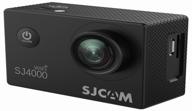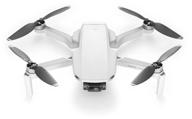
Review on GVM Video Slider: Wireless Carbon Fiber Motor Camera Slider with Bluetooth Remote & Mobile App Control, 31”/80cm Electronic Camera Slider Auto Loop Track System Shooting Equipped by Scot Hughes

4 stars or 5? Small bits of nit
Includes all necessary parts, everything works. No problem. When you first unzip and run it, you'll probably complain about the noise. Quieter on tripods or other surfaces. Full speed is pretty loud and full speed is pretty quiet. Of course, this doesn't matter for time lapse. For videos, I would use a pistol mic or an out-of-body mic. In any case, you should not use the microphone on the camera if you care about the sound at all. My problem is: at the slowest speed it's still too fast. The trolley can be transported from end to end (31 inch model) in 2.5 minutes. It would be great to see 10 or 20 minutes instead. I can take 300 photos in one go at a reasonable interval. The shutter output (referred to as the camera) sends a signal when the motor *starts* the interval, not when it ends. That means when the dolly starts is a signal sent to my camera (Fuji XT3) to take a picture. So it's useless. I want it to send a signal when the carriage motor stops so it stands still when the camera takes a picture. As it is I have to do the math with the intervalometer to try and determine the time to take the picture. It could have been a lot easier, and that's pretty much why I took off the star (the carriage moves in discrete steps in time-lapse, but smooth, continuous movement in video mode). .I will never use Panorama mode as my cameras do it so well out of the box.Software/Controller. Hum without practicing with the controller first. There is no really logical workflow. Lots of jumps around. Pressing ESC freezes the value, not ENTER. ENTER should be marked as SELECT, then it would make more sense. The Bluetooth connection may take some time. The Bluetooth target is called GVM. I had no idea how much Bluetooth there was in my area, so this label came in really handy. Once you get the hang of it it works and in the end it's what I need. The phone app is better, but only because it's more responsive. The workflow is the same. It has sliders for setting values and my i (phone) connects quickly. I no longer use the controller that came with it. The battery in the controller lasts forever, but if you're concerned and you have a slider in a cycle that's taking a long time, you can turn off the controller and the slider will still work as programmed. Of course, if you turn it back on, you'll have to reset your start and stop points again. There is no way to save user data. The center panel's panoramic angle offers more than enough angles. It's a great mechanism. The large engine batteries last a long time (although I haven't tested how long I keep charging them) and you can swap them out one at a time while the pusher is running. I find the documentation incomplete. I don't know what the RJ-45 connector is for. I had to try and figure out what the 2.5mm jack labeled "camera" was for and how it worked (see above). The documentation describes what it is, but not how to use the device. My Fuji XT3 with lens weighs less than 4 pounds so I can't say how much weight it will hold, but it pushes my Fuji accurately horizontally, obliquely and vertically. If all other sliders were the same as this one I would buy it again, but if I could find one where the carriage movement at the lowest speed was significantly slower I would buy it instead. So. it works and it works as described. But it could have been better. At this price, it's actually pretty cool.
- Camera and photo
- Slightly wrinkled











